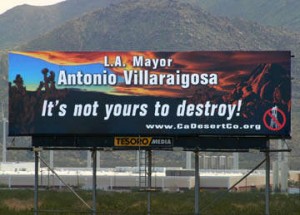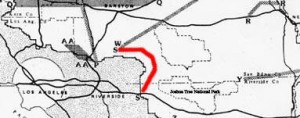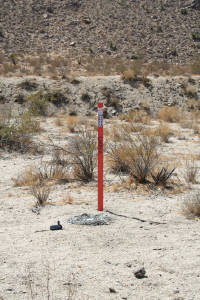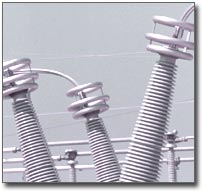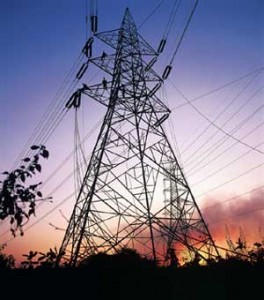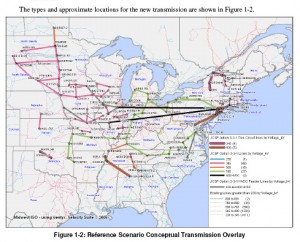Kandiyohi burner shot down twice yesterday!
February 18th, 2009
Kandiyohi Development is at it again, trying to ram through an incinerator in Rockford, Minnesota. Here’s a prior post:
Apparently, their plans to site in in the City of Rockford crashed, so they went to the neighboring township. Yesterday, they went down in flames in both Rockford Township and Wright County where they’re trying to locate this thing — both local governments, on hearing their pitch to be exempted from utility personal property taxes and asking for their blessing, said NO! We’re not signing off on a utility personal property tax exemption!
The School Board is next…
Here’s the bill that they’re trying to get through the legislature, SF 703 and HF 845 that needs to be stopped pronto:
1.8 Subd. 90. Biomass electrical generation facility; personal property.
1.9 Notwithstanding subdivision 9, paragraph (a), attached machinery and other personal
1.10 property which is part of an electrical generation facility that meets the requirements of
1.11 this subdivision is exempt. At the time of construction, the facility must:
1.12 (1) have a generation capacity of less than 30 megawatts;
1.13 (2) be located within a township with a population of less than 7,000;
1.14 (3) be located on land within five miles of a distribution substation;
1.15 (4) be designed to utilize biomass as a primary fuel source;
1.16 (5) be owned by a limited liability company, limited liability partnership or
1.17 corporation, any of which must be registered in Minnesota; and
1.18 (6) have received by resolution the approval of the governing body of the county,
1.19 township, and school board in which the proposed facility is to be located for the
1.20 exemption of personal property under this subdivision.
1.21 Construction of the facility must be commenced before January 1, 2013. Property
1.22 eligible for this exemption does not include electric transmission lines and interconnections
1.23 or gas pipelines and interconnections appurtenant to the property or the facility.
1.24 EFFECTIVE DATE.This section is effective the day following final enactment.
Who to contact about this? It’s been sent to the House Tax Committee and the Senate Energy Committee, so start there.
Authors to blame for this are: Senators Koch, Dibble and Dille, and Representatives Emmer, Dill and Rukavina.
Click here to contact them:
Call and email them today!
You’d think that Dill and Rukavina would have learned with that Laurentian biomass burner that violated its permit and had to be shut down, the MPCA had to rework the permit so that it could even run, and it has been having so many problems and is out of service so often that the ratepayers are FURIOUS!
Here’s the language we added to the Mesaba bill, now Minn. Stat. 272.02, Subd. 55, to require “payment in lieu of taxes” which would tank the project:
I think this is the one for the Invenergy plant in Cannon Falls, Minn. Stat. 272.02, Subd. 69:
LA billboard: NO TRANSMISSION LINE!
February 18th, 2009
I-10 billboard criticizes LA proposal to run electrical lines through Inland areas
By JANET ZIMMERMAN
The Press-EnterpriseThe billboard reads: “L.A. Mayor Antonio Villaraigosa, It’s not yours to destroy!”
Check out the site for the:
And here’s the map of LA’s preferred corridor, and the wide line on the map is accurate as they’re planning a TWO to FIVE mile wide corridor! Really! TWO to FIVE miles!
Here’s another site — groups fighting this stupid “Green Path North” idea:
STOP Green Path North, LADWP and Imperial Irrigation District
Prairie Island – safety risk “YELLOW” incident
February 17th, 2009
Seems Xcel had a bit of a problem with an equipment shipment from Prairie Island Nuclear Generating Plant… oops… it was too radioactive at the receiving end of the line… how was it before and during??? Hmmmmmm…
Here’s the NRC report:
Bottom line?
…. the NRC concluded, that the elevated ratiation levels, although on the underside of the package, had the potential to adversely affect personnel who would normally receive the package and/or respond to an incident involving the package with the reasonable expectation that the package conformed to DOT radiation limitations.
and, regarding Title 49 CFR 173.44(a) which sets out specific shipping requirements …
Contrary to these requirements, on October 29, 2008, Northern States Power – Minnesota (Prairie Island) shipped a package containing radioactive material that was not sufficiently designed nor prepared to assure that, under conditions normally incident to transportation, the radioation level on the external surface of the package would not exceed 200 mrem/hour. When received and surveyed at the shipping destination (Westinghouse in Waltz Mill, Pennsylvania), on October 31, 2008, the external surface of the package exhibited radiation levels of 1630 mrem/h [i.e. package radiation levels greater than five and less than ten times the regulatory limit].
Prairie island Preliminary Yellow Findings Report, see p. 9-11.
Here’s the story from the Red Wing Republican Beagle, also posted as AP in STrib and StPPP:
Shipments radioactivity was too high
Anne Jacobson
The Republican Eagle – 02/16/2009A radioactive piece of equipment passed muster when it left Prairie Island nuclear plant, but the package exceeded safe radiation shipping levels by eight times when it reached Pennsylvania.
Plant Vice President Mike Wadley called it a serious and rare event.
The Nuclear Regulation Commission officials notified him by mail last week that they have issued a preliminary “yellow” finding in the matter. Yellow is the third highest of four safety risk rankings.
The NRC defines a yellow as an incident of substantial safety significance that will require additional inspections.
The plant immediately reported the incident to the NRC, Wadley said Monday. Westinghouse Electric Co., which received the shipment, also filed a report.
Investigators determined that a small particle moved during shipping, coming to rest on the steel shipping container’s bottom. That spot exceeded by eight times the 200 millirem radiation limit set by the U.S. Department of Transportation.
The equipment, which workers used during the plant’s Unit 2 refueling outage last fall to test the integrity of fuel rods in preparation for moving them, is always shipped by itself on a flatbed truck.
“It isn’t migrated or commingled with any other shipment,” Wadley said. “The trucker, no workers, no members of the public were affected.”
The plant promptly stopped all shipments so staff could evaluate what went wrong and modify procedures. Limited shipments resumed Feb. 6.
“We think we’ve eliminated the possibility going forwarded,” he said.
The plant ships potentially radioactive items, from oil to equipment, once a month.
Xcel Energy owns the plant. The utility’s officials as well as plant managers are reviewing the NRC’s preliminary yellow determination and will decide if they wish to respond in person or in writing. A final NRC determination is expected within 90 days.
JCSP & UMTDI in the news
February 16th, 2009
More transmission – again in the Wall Street Journal.
Hard to tell which of the alphabet soups this article is about, and I’d say both, it’s about the Joint Coordinated System Plan and the Upper Midwest Transmission Development Initiative — UMDTI! But we know it’s all one and the same.
The article doesn’t really specifically name either “group” and it leaves us wondering just who or what is behind it. This is a good thing — yes, it really is as amorphous as it sounds! What disturbs me, of course, is the “It’s for wind,” because we know better!
At least the WSJ noticed the NYISO and ISO-NE’s objections — here it is again, it’s one of those letters I just can’t get enough of:
The UMDTI is insidious, a cheerleading effort to push transmission through. The way the thing is structured, is, as I said in my comments at the February 11, 2009, meeting, is ABSOLUTELY ASS-BACKWARDS. It’s market driven backwards engineering a transmission solution to support nonexistent need.
Upper Midwest Transmission Development Initiative – HOME PAGE
UMTDI Stakeholder Letter 10-28-08
Stakeholder Responses – LINK – look who the stakeholders are – DUH!
Wind on the Wires Comments … sigh…
UMDTI Stakeholder Letter 12-31-08 (Ed Garvey – MISO)
Dec 30 Draft – Cost Allocation Work Group (Marya White – Commerce)
December 30 Draft – Transmission Planning Work Group (Randy Pilo – PSC-WI)
Wind on the Wires cites many studies:
MISO’s Regional Generation Outlet Study (RGOS)
Transmission planning initiatives by” CapX 2020, ATC, Mid-American and others”
Minnesota RES transmission study
MISO’s MTEP-08 and MTEP-09
Joint Coordinated System Planning Stuey
Eastern Wind Integration Transmission Study
None of these studies are linked — and they’re not on the UMTDI site — let’s see how long it takes to find them.
Now for the more difficult ones… one moment please…
Joint Coordinated System Plan
February 12th, 2009
With all these transmission proposals from hell announced, I think we’ve got to take a step backwards, and go through JCSP, the source of an insane “plan” for transmission across the U.S. JCSP is “Joint Coordinated System Plan,” which is MISO, PJM, SPP, TVA, and MAPP, getting together and fantacizing about transmission. This has nothing to do with need, with whether there’s a market, with whether it’s in the public interest, it’s what they want.
The NYT “Green Blog” had a post about this a couple of days ago that got this completely wrong, as you can see from the headline:
EARTH TO MARS — IT’S NOT FOR WIND.
Here’s a NYT “Green Blog” snippet with a look into the JCSP’smotivation (click for the whole thing):
The Joint Coordinated System Plan, as it is called, has been in development for months, according to the Midwest Independent System Operator, which is steering the project — and the full report will not be ready until the fall. But details of the plan were revealed on Monday in order to coincide with debate over the stimulus bill.
Yes, the stimulus bill. There’s a lot of money in that stimulus bill for transmission, and there’s NO money in the market for building transmission, or anything for that matter — remember, CapX 2020 was hustling Lehman Bros. for money, so it’s possible CapX won’t be built anytime soon. There they go to the government trough…
JCSP has it’s own site, just a contact form, with no contact information on it whatsoever, other than links to “the participants.”
Here’s their “plan” for transmission across the US:
So let’s see, we’ve got CapX 2020, MISO’s MTEP, the JCSP dream/nightmare plan, the Green Power Express… and they keep trying to couch their market dreams into wind, needed for RES. Can’t beople do a little background checking before they jump on this bandwagon? Can’t they do their due diligence like NYISO and ISO-NE?
DUH! There’s no market. This is such arrogance on the part of MISO…
